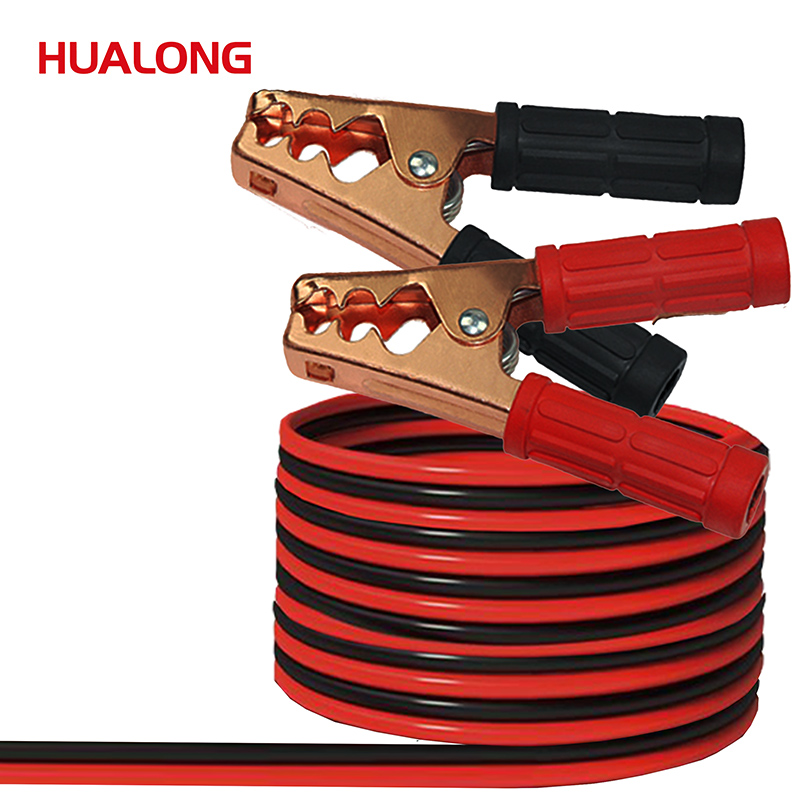How do battery clamp designs differ based on the intended application?
Battery clamp designs vary significantly depending on the intended application, as different applications have unique requirements for performance, safety, and durability. Here’s a breakdown of how battery clamp designs differ based on the intended use:
1. Automotive Applications
Design Features: In automotive applications, battery clamps are typically designed for ease of use and reliability. These clamps are often made with high-conductivity materials like copper or brass, and they are typically designed to have a quick-connect or spring-loaded mechanism for fast and secure attachment to car battery terminals.
Size and Fit: The clamps are usually sized to fit standard automotive battery terminals, which can be either post or bolt types. They are designed to provide a firm, reliable connection without the need for tools.
Corrosion Resistance: Automotive clamps are coated with corrosion-resistant materials, such as tin or nickel plating, to prevent damage from the exposure to moisture, heat, and road salts.
Safety: Insulated handles or covers are commonly used to prevent accidental short-circuiting and to ensure safe operation, especially when jumping a vehicle or performing maintenance.
2. Industrial Applications
Design Features: Battery clamps for industrial use, such as for heavy machinery or backup power systems, are built to handle higher currents and more demanding environments. These clamps may feature reinforced materials, larger contact surfaces, and heavy-duty springs to ensure a stable connection.
Durability and Strength: These clamps are typically designed to withstand extreme conditions, including high temperatures, vibration, and exposure to chemicals. They are often made of stainless steel or other highly durable materials to ensure long-lasting performance.
Clamping Force: Industrial battery clamps are often engineered to provide greater clamping force to ensure they remain securely attached under high current loads or when subjected to heavy machinery vibrations.
Temperature and Environmental Resistance: In many industrial settings, battery clamps are also designed to function in environments with extreme temperatures or exposure to harsh elements, with some clamps being designed to work in high-temperature environments.
3. Renewable Energy Systems
Design Features: Battery clamps for solar energy systems or other renewable energy setups may have specialized features designed to meet the needs of energy storage systems. These clamps are often used with larger, deep-cycle batteries and require precise and secure connections to ensure consistent power flow.
Material Selection: Since renewable energy installations are often exposed to the elements, battery clamps are typically made from corrosion-resistant materials, such as marine-grade stainless steel, aluminum, or coated metals. Clamps must also offer high electrical conductivity to maximize the efficiency of energy transfer.
Customization and Size: Clamps in this category may be more customizable to fit the battery type used in energy storage systems, such as lead-acid or lithium-ion batteries, ensuring a reliable connection with minimal resistance.
Safety and Sustainability: These clamps may include insulation or coating designed to enhance safety in case of system faults or exposure to environmental stresses like rain or dust.
4. Military or Aerospace Applications
Design Features: Battery clamps for military or aerospace use are often subject to rigorous specifications for reliability, performance, and safety. These clamps are designed to function in extreme conditions, including high altitudes, low temperatures, and high vibrations.
Materials and Durability: Typically made from high-strength alloys or specialized materials, these clamps are designed to be extremely durable and resistant to harsh environmental conditions, such as exposure to saltwater or corrosive substances.
Advanced Features: In these applications, battery clamps may feature advanced locking mechanisms, shock-proof designs, and fail-safe features to ensure the clamp does not come loose under challenging conditions.

5. Marine Applications
Design Features: Battery clamps used in marine environments need to be resistant to corrosion due to saltwater exposure. These clamps are often made of materials like stainless steel or tinned copper, which resist corrosion while maintaining high conductivity.
Insulation: Marine battery clamps often have additional insulation to prevent accidental short circuits and to protect users in wet conditions.
Resistance to Vibration: Given the frequent exposure to vibrations in marine environments, these clamps are designed to remain securely attached even in rough seas, offering extra grip and pressure to maintain a strong electrical connection.
6. Consumer Electronics or Small-Scale Applications
Design Features: For consumer electronics or small-scale battery applications (e.g., in power tools or portable devices), battery clamps are often smaller and lighter, designed for convenience and portability.
Material and Size: These clamps are typically made from lower-cost materials such as aluminum or steel and are sized to fit the battery terminals of consumer-grade products. They are often designed with simple spring-loaded mechanisms to provide quick connections.
Ease of Use: These clamps are intended to be used by consumers, so they are often designed with ergonomic handles or simple pressure systems to ensure ease of use in low-stress situations.
7. Electric Vehicles (EVs) and Hybrid Vehicles
Design Features: Battery clamps in electric and hybrid vehicles need to handle high voltage and current levels due to the large battery packs used in these systems. These clamps are engineered to provide a stable connection with minimal resistance to ensure efficient power transfer.
Electrical Insulation: Special attention is given to insulation in EV battery clamps to prevent electrical hazards. The clamps often feature additional protective layers to handle the high-power demands safely.
Heat Resistance: These clamps are often designed with enhanced heat resistance to manage the thermal challenges posed by high-voltage systems and battery charging/discharging cycles.

 English
English 中文简体
中文简体












